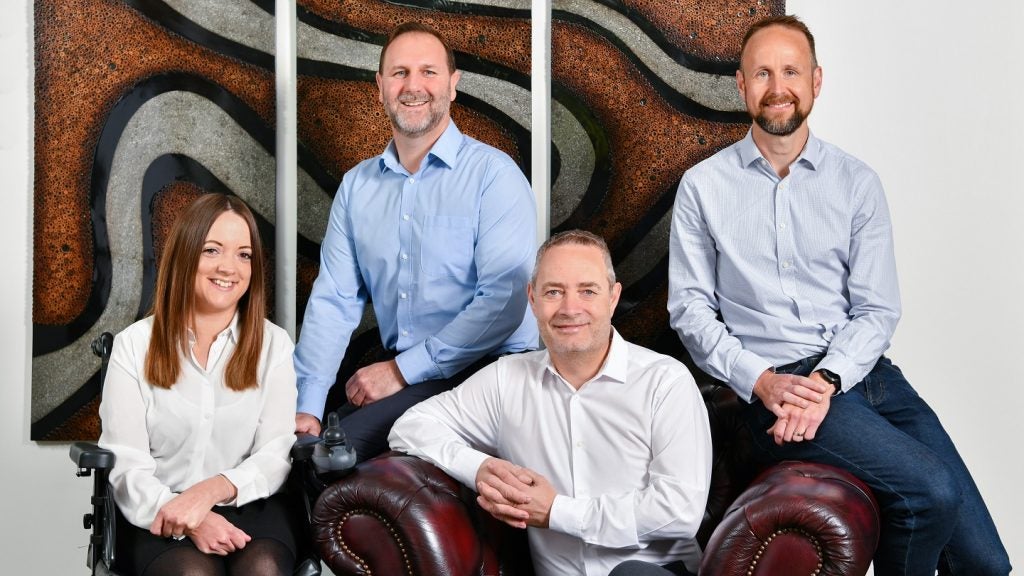
Andrew Denton, chief operating officer, CHP Consulting
I’m full of positivity for the year we’re seeing out. One of the results of some recent research by IAA-Advisory and the Leasing Foundation was that the leasing and asset financing business is actually much bigger than people think. It could be that we underestimate it by up to four times, and that’s not just because some leasing providers don’t report their figures to a trade body; people acquire all manner of products and services through regular payments (phones, insurance), but we don’t call them leases. If they follow the pattern of a lease, and achieve the same goals, let’s call them leases. I enjoyed the time earlier in the year when Apple came up with an ingenious plan to let their US customers get hold of new iPhones by paying a regular monthly amount, and throwing in upgrades. "Well done, Apple," we thought, "You’ve invented leasing!" As I’ve said before, leasing is the solution to a problem, rather than a proposition in itself. More and more, the wider world is getting that. Business is buoyant, and growth levels are at their healthiest in years. Long may this continue.
Marie Christine Ducholet, chief executive officer, SGEF
2015 is definitively the digital year. It affects all the banking industry. Indeed, Fintech is transforming the finance industry.
Societe Generale Group is one step ahead and is living its digital revolution. Of course, the equipment finance sector is not isolated from this phenomenon. From the B-to-C world, these new players are coming in the B-to-B environment with technical innovations dedicated to make the business easier for the clients and the vendors. That’s why it is urgent to adapt our business to our clients’ state of mind to our vendor partners’ way of work.
SGEF innovates everywhere, being the spearhead in this global move. As examples we could talk about the agriculture on-line vendor system in the UK, the Norwegian 100% digital business line, the new Polish interactive portal, the e-invoicing in the USA, etc.
And this trend will go on in 2016. Indeed, SGEF will accelerate its transformation, especially concerning its vendor partnerships.
Carmen Ene, chief executive officer, 3 Step IT
How well do you really know your competitors?
Access the most comprehensive Company Profiles on the market, powered by GlobalData. Save hours of research. Gain competitive edge.

Thank you!
Your download email will arrive shortly
Not ready to buy yet? Download a free sample
We are confident about the unique quality of our Company Profiles. However, we want you to make the most beneficial decision for your business, so we offer a free sample that you can download by submitting the below form
By GlobalDataPerhaps one of the ‘ups’ hasn’t happened yet, but now we’re promised the new accounting standards will, finally, be published. And its delay was one of the ‘downs’.
I think the uncertainty that surrounded the new accounting standard has damaged the leasing business. First it evolved, became overly complex in a purist accountancy search for perfection, then it was simplified, and all the time delays piled up. Lessees were put off, especially those leasing over a long period who did not know what bookkeeping disruption they would be signing up to. And now it’s to be published in December. So a drag on our industry is removed. But that’s not all: the new standard undoubtedly shifts the balance between leasing and services. Leasing without services is dead; it’s a race to the bottom, with deceptive contract clauses and ever-lower financing rates. Rather than a offering only the means to acquire an asset, the new standard gives an impetus to offer service-plus financing. It’s our opportunity to innovate, to add more value, to offer business solutions.
It’s for each lessor to work out a the innovation and business strategy that will work best in their niche. Carpe diem.
Chris Boobyer, senior partner, Invigors
The global market for leasing and asset finance is (still) slowly recovering from the great recession of 2008-09.
The two most recent industry research papers published in Q4 2015 by Leaseurope and the US Equipment Leasing & Finance Foundation signpost cautious optimism for continued growth against a background of low market funding rates. However, both publications also highlight potentially significant causes for concern, identify material gaps in performance of industry channels and identify a subtle shift in the motivation and purpose for funding new and used equipment. While these analyses are excellent, I think they are also a bit too comfortable in suggesting that new growth and customer satisfaction will automatically happen, simply with a small shift in focus or if asset financiers embrace some of the obvious answers to ‘use not ownership’ (not to underplay that subtle shift in emphasis).
I am lucky that my views and perspectives on our industry are shaped not only by my own client experiences, but also by my work with the established leaders of the asset finance industry at the Leaseurope CEO Business Council; the sometimes radical ideas from the emerging talents known as the Leaseurope Future Group and of course feedback from my global consulting colleagues in Alta. The key issue that comes from that sometimes confusing and diverse mix of views is as follows; we often talk about harnessing technology but in practice, leasing companies largely use technology for the purpose of improving internal systems, measuring productivity or improving relationships with parent banks or funding sources.
As an industry, we are behind other sectors using modern technological developments more holistically.
George Ashworth, director, Virgin Money SME Lending
Seeing our business world as I do through a lens of data, deposits and distribution, 2015, has been a notable year. The tsunami of liquidity that is looking for yield has found it in part in the UK asset finance space. If relatively good yield can be secured and losses mitigated by way of being secured via ownership rights on underlying assets, then nobody should be surprised that 2015 has been the year of the ‘new entrant’; Star Capital, Cabot Square; Highbridge Securities etc have all entered the market. Other ‘challengers’ are also entering and/or growing; Hampshire Trust, Secure Trust Bank etc.
Partly driven by the new entrants’ phenomenon, we have seen and continue to see broker businesses being snapped up as the need for distribution drives consolidation in this space. This trend will continue in 2016 and will have far reaching financial and structural consequences across the market in 2016, particularly to those funders whose distribution is wholly dependent upon brokers. It will also drive further changes across the brokerage community in the longer run. This is happening at a time when asset finance products – HP and leasing – have overtaken traditional bank lending as the largest form of lending to SMEs. The asset finance market is large and it is growing larger. The excellent research conducted by Leaseurope in conjunction with Oxford Economics highlights that well over 40% of European SME’s currently use asset finance and that the usage of asset finance is forecast to grow to over 50% by 2017.
On a European front, 2015 saw the departure after 10 years of Tanguy van de Werve as director general of Leaseurope. We wait to see who will fill the position.
On the legal and fiscal fronts, I think 2015 will be remembered for the VW case as it relates to VAT attribution as well as for the Plevin case on potential mis-selling. It will also be the year of severe and abrupt reminders of how we as businessmen and women need to take care of our data (as in the cybercrime case of Talk Talk), care of our staff, and our businesses with the ever-present and growing danger of terrorist attack. On that note, I wish everybody a safe and successful 2016.
Roger Potgieter, Partner, Shoosmiths
At a time when general fraud continues to grow at an alarming rate, the asset finance industry is bucking the trend. Figures obtained from Cifas (the UK fraud prevention service) show that the number of frauds reported across its membership (including banks, building societies, telecommunications suppliers and online retailers) has grown at an alarming rate over the last few years, from 217,385 in 2010 to 276,993 in 2014.
As we approach the end of another year this figure is set to rise to a staggering 322,000 reported frauds for 2015, a further increase of 16%.
By contrast, the number of frauds reported to Cifas by its asset finance members fell from 9,665 in 2010 to 7,858 in 2012. After a sharp spike in 2013, it declined once again in 2014 (by 8.4%), a feat it is set to repeat in 2015 (although by a slightly smaller margin). It may be the case that the asset finance industry is less attractive to fraudsters than, for example, bank accounts and credit cards.
However I believe that the figures are also a reflection of the efforts put into fighting fraud by the industry.
The FLA in particular continues to play a leading role through initiatives such as NAVCIS and by creating a forum for members to collaborate, co-operate and communicate.
At the same time I am regularly impressed by the extent to which lenders themselves are investing time and resource in the ongoing battle against fraud.
All being well the downward trend in our industry will continue.
Gavin Wraith-Carter, general manager, Hitachi Capital UK Business Finance
To paraphrase the famous Arkwright; it’s been an interesting year!
With sterling at a high against the euro, it has certainly had a significant impact on our farming community, and stories abound over the detrimentally high levels of used stock held at dealerships across the UK. Whether or not "UK Farm PLC" turns in an overall loss for the year is still up for debate, but it does highlight the absolute imperative that our financial services community needs to continue to stand shoulder to shoulder with all our customers throughout the whole economic cycle, whatever it brings. It is encouraging that our research among British SMEs through the Hitachi British Business Barometer, indicates a much stronger sense of partnership between SMEs and the financial services industry, and that our willingness to lend and support is increasingly well recognised.
Trust is hard to gain and easy to lose, as an industry we should take heed of the concern raised recently by one significant trade body, about our perceived commitment to maintain support through difficult times.
We should all be accountable for the long-term, sustainable contribution we make towards the ongoing success of the SME population and the UK as a whole. That is only possible if we remember all the hard lessons we have already learnt. We need to ensure that we maintain the right risk appetite, the right margins and the right balance between the longer-term focus over short-term volume chasing.
Geraldine Kilkelly, head of research and chief economist, Finance & Leasing Association (UK)
UK domestic demand has continued to drive economic growth in 2015.
Business investment in the first nine months of the year increased by 5.5% and is expected to grow by 6% in 2015 overall. The asset finance market has supported this recovery in business investment through the provision of £24bn of new finance to businesses of all sizes in the ten-month period to October 2015. Annual new business is expected to reach a seven-year high in 2015 of more than £28bn. The share of UK investment in machinery, equipment and software funded by the industry reached 32.4% in the 12 months to September 2015, its highest level for more than six years.
The strongest performers in 2015 so far have been the IT equipment, business new car and commercial vehicle finance sectors with new business up by 44%, 12% and 11% respectively, compared with the first ten months of 2014. It hasn’t all been plain sailing though as the slowdown in emerging markets has hit demand for agricultural and construction equipment finance. As for the outlook over the next year, the industry is cautiously optimistic of further growth in new business of up to 10% in 2016.







